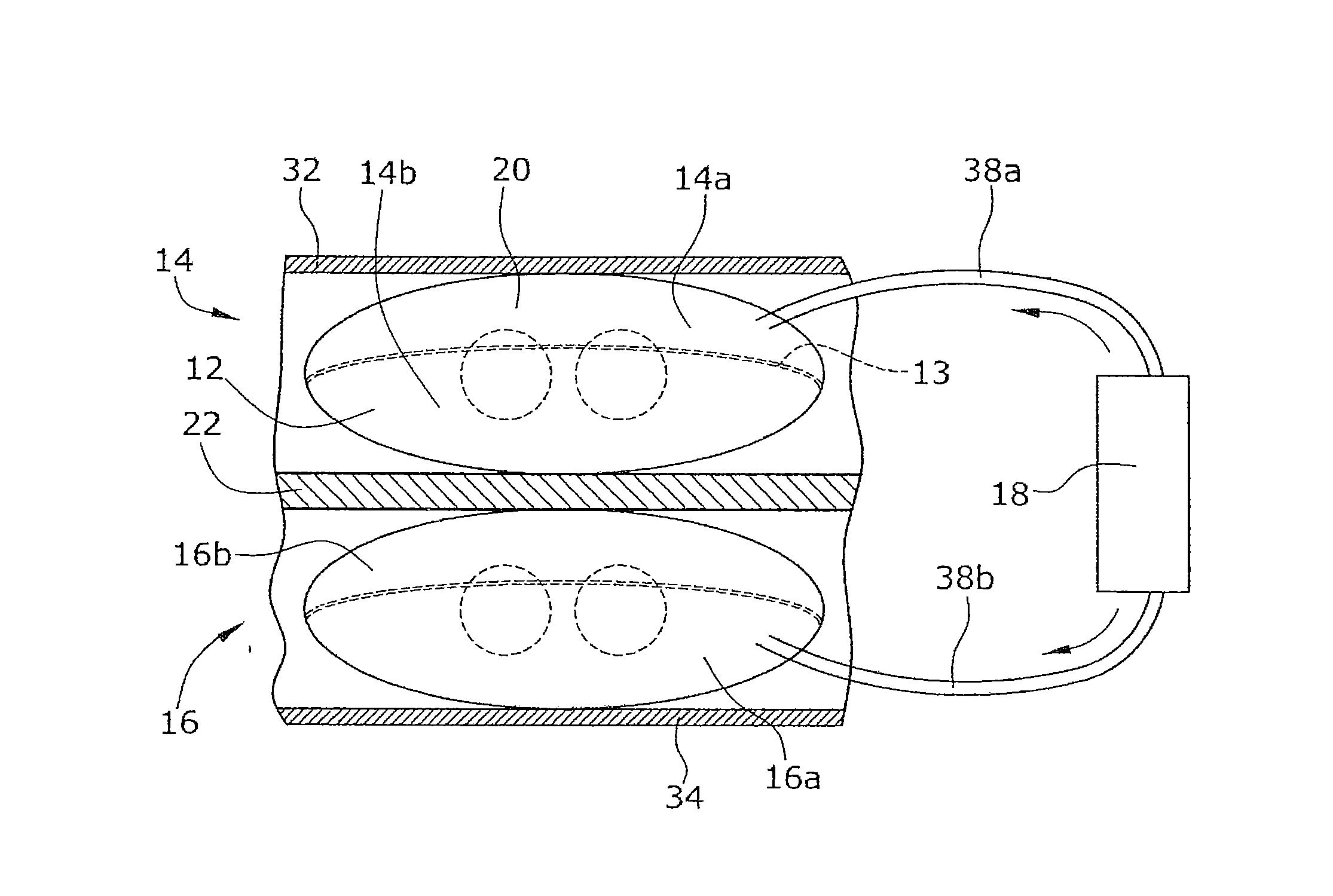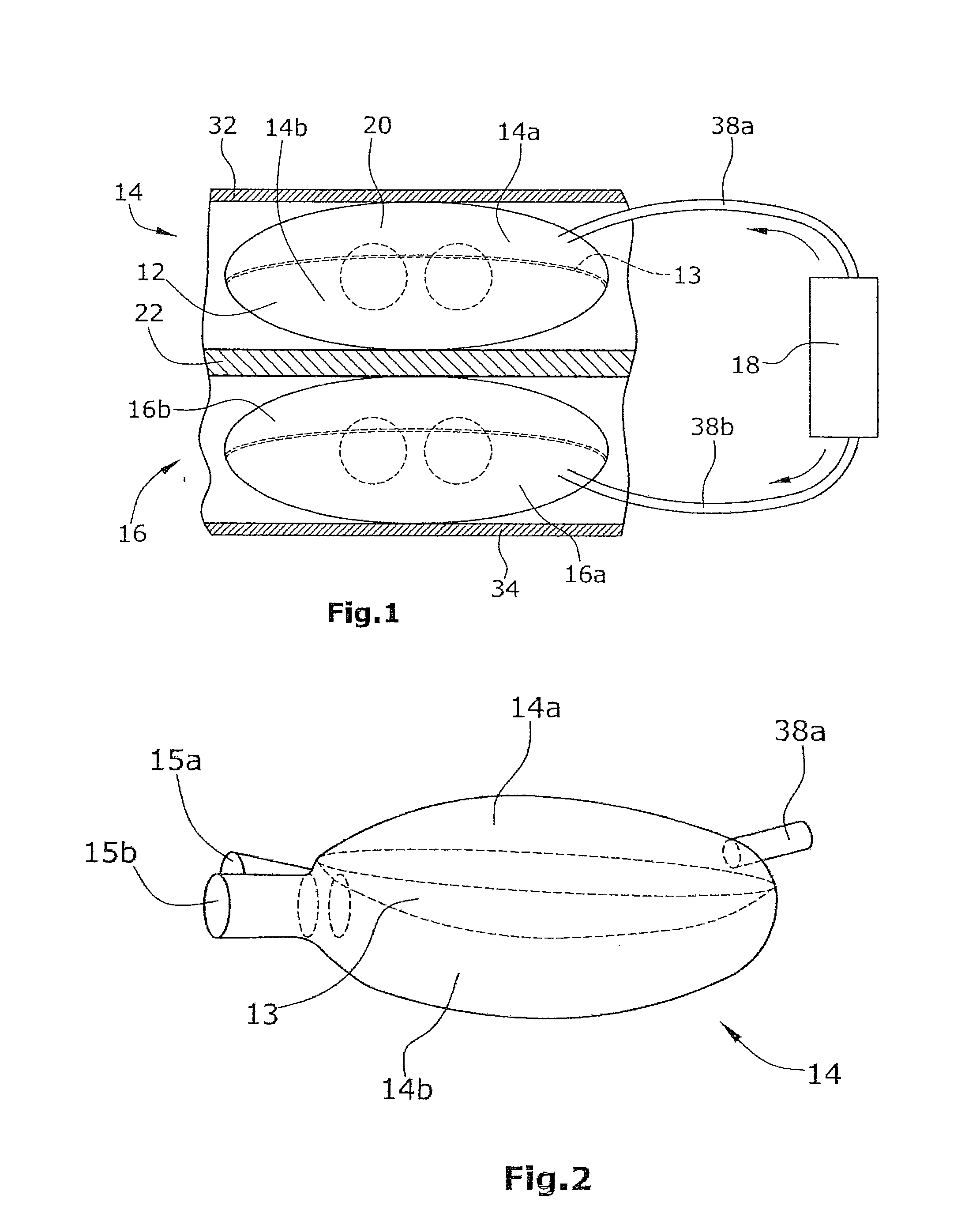Heart support device
a technology of heart support and stent, which is applied in the field of heart support devices, can solve the problems of low degree of efficiency, blood damage to the patient by pumping work, and power supply to the electrically operated system, and achieve the effect of enhancing blood flow and reducing the volume of the first and second blood-conveying chambers
- Summary
- Abstract
- Description
- Claims
- Application Information
AI Technical Summary
Benefits of technology
Problems solved by technology
Method used
Image
Examples
Embodiment Construction
As shown in FIG. 1, a heart support device for pulsatile delivery of blood 12 comprises a first 14 and a second 16 ventricle. Each ventricle comprises a fluid chamber 14a,16a and a blood-conveying chamber 14b,16b. Said fluid chambers are filled with hydraulic liquid. Fluid chamber 14a is connected to a pump 18 via a fluid conduit 38a. Fluid chamber 16a is connected to pump 18 via a fluid conduit 38b. By means of pump 18, hydraulic liquid will be pumped alternately into said first and second fluid chambers 14a,16a, causing an alternate expansion of the two fluid chambers 14a,16a. Expansion of fluid chamber 14a of ventricle 14 will result in compression of blood-conveying chamber 14b of the same ventricle 14. The same applies to the second ventricle 16.
Pump 18 is arranged outside the first and second ventricles 14,16 as well as outside the first and second fluid chambers 14a,16a. As can be seen in FIG. 1, pump 18 is arranged, e.g., on the right-hand side of the two ventricles 14,16. T...
PUM
 Login to View More
Login to View More Abstract
Description
Claims
Application Information
 Login to View More
Login to View More - R&D
- Intellectual Property
- Life Sciences
- Materials
- Tech Scout
- Unparalleled Data Quality
- Higher Quality Content
- 60% Fewer Hallucinations
Browse by: Latest US Patents, China's latest patents, Technical Efficacy Thesaurus, Application Domain, Technology Topic, Popular Technical Reports.
© 2025 PatSnap. All rights reserved.Legal|Privacy policy|Modern Slavery Act Transparency Statement|Sitemap|About US| Contact US: help@patsnap.com



